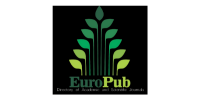An Overview on The Phytochemical and Therapeutic Potential of Ginkgo Biloba
DOI:
https://doi.org/10.62752/e5d6sk81Keywords:
Ginkgo, Flavonoids, Terpenoids, Bilobalide, Antioxidant, Cognitive, Ginkgolides, BiflavonesAbstract
Background: Ginkgo biloba leaf extract (GBLE) contains flavone glycosides and terpenoids and is widely studied for its pharmacological potential. Key Pharmacological Effects: GBLE exhibits antioxidant activity by scavenging free radicals and reduces inflammation by suppressing reactive oxygen and nitrogen species. It improves vascular relaxation, blood flow, and microcirculation, antagonizes platelet-activating factor, and modulates neurotransmitter activity. GBLE protects mitochondria from oxidative damage, reduces neuronal cell death, and shows neuroprotective effects in experimental models. Clinical Relevance: In ischemia-reperfusion injury models, GBLE demonstrates cardioprotective and antioxidant effects in vivo. Clinical trials report beneficial outcomes in patients with memory disorders, arteriosclerosis, and dementia. Conclusion: GBLE’s strong antioxidant and anti-inflammatory properties suggest its potential as a therapeutic agent for oxidative stress-related diseases, including ischemic heart disease, cerebral infarction, chronic inflammation, and aging.
Downloads
Published
Issue
Section
License
Copyright (c) 2025 Pharmacytalk2us

This work is licensed under a Creative Commons Attribution-NonCommercial 4.0 International License.










